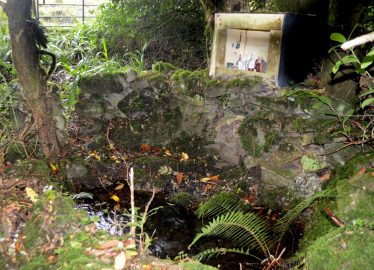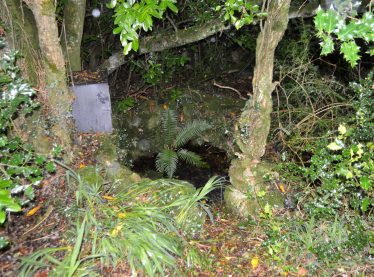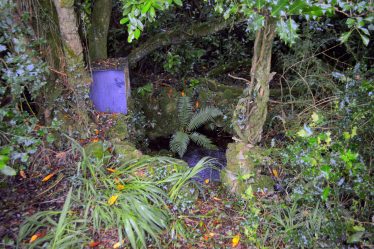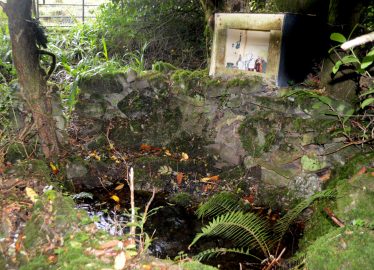Tobermacshane, Tobar Mhic Sheáin, Uggoon Upper




Townland: Uggoon Upper, Tulla
The townland placename is not common. In Irish it is Ógún or in some instances, Ógúl.
Description of Holy Well and Landscape Setting
Tobermacshane means ‘The Well of the Son of John’. The well is an 8-10 minute walk from the road, along a farm track to a small grazing field that is immediately after a little wood. The well is to the left, about halfway down the field. It is denoted by wire fencing and is well secured against animal damage. The well is formed from a strong flowing spring of cool clear water. It overflows the well space to form a quick moving stream. A grotto made from a wooden box sits on the wall beside the well. It contains a number of small religious statues that appear to have been in place for some time.
Saint and Feast Day Associated with Holy Well
There is no specific feast day associated with the well. Though the well is clearly religious in nature, the name Tobermacshane offers no clue as to its patron saint. The land in which the well stands was once extensive MacShane territory, suggesting that the name of the well refers to Gaelic landowners rather than a religious figure. This is quite unusual.
Natural Heritage around the Holy Well
There are a number of fine ash trees shading the well. Other trees present include holly, birch and alder, with some planted box hedging.
Heritage Attractions Nearby
The well is in an area of rich scenery. All around are the hills of East Clare with Lough Graney at their centre. The villages of Tulla and Feakle are within easy reach.
Additional Information
MacShane involvement in the 15th century in the area where the well is located is mentioned by James Frost in his book ‘The History and Topography of the County of Clare’,1893:
‘The Slatterys are to pay to the MacShanes at present twenty shillings, and two ounces yearly for two years from this date, and are bound to honour the sept of MacShane with suitable food and raiment according to their ability; and the sept of MacShane are bound to protect that family. And if it should happen that both parties should preserve the land from those dealing unjustly towards them, then after the expiration of two or three years from this time, the treatment of the MacShanes by the Slatterys shall be regulated thenceforth according to the judgment of Teige MacClancy; of Mahone, son of John, son of Donogh, and of Rory O’Hickey. A.D. 1493’.
There is reference to Tobermacshane in the Ordnance Survey Letter Records, 1839:
There is a Holy Well in the Townland of Uggoon called Tobar-Mhic-Seaain, i.e., the Well of the Son of John, at which Stations still continue to be performed, but on no particular day.
T.S. Ó Máille in his essay ‘Na hÁit-Ainmneacha’, proposed that Ogúl (or Ógún) refers to the Old Irish ‘accomol’, meaning junction or connecting piece of land.
Discover More…
Ordnance Survey Letters, Royal Irish Academy
Ordnance Survey Letters, Ask About Ireland
Frost, J 1893, The History and Topography of the County of Clare: From the Earliest Times to the Beginning of the 18th Century, Sealy, Bryers & Walker, Dublin
– Part I. Topography of Thomond, Chapter 4, Ui Caisin
Ó Máille, T.S. 1953, ‘Na hÁit-Ainmneacha’, Journal of the Royal Society of Antiquaries of Ireland, vol. vol. LXXXIII, pp 82-85
Record of Monuments and Places Number
RMP-CL027-012




No Comments
Add a comment about this page